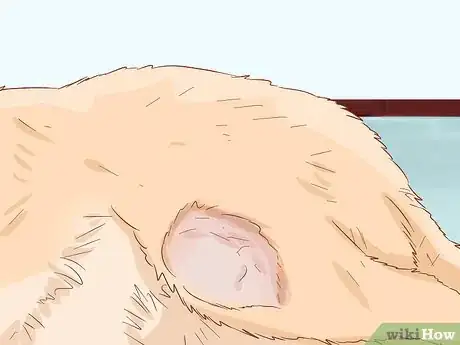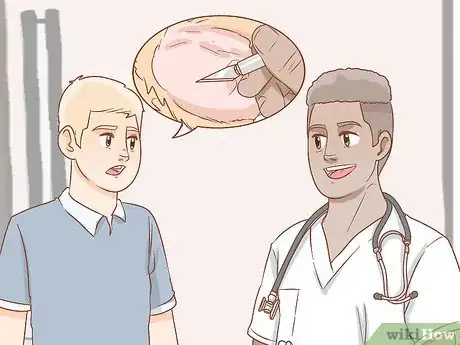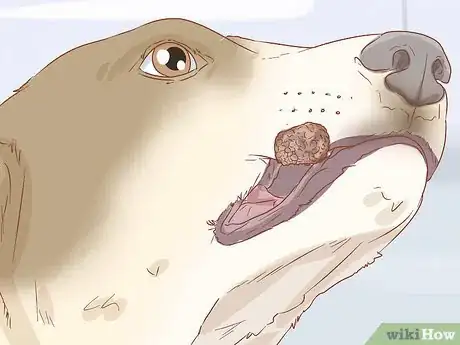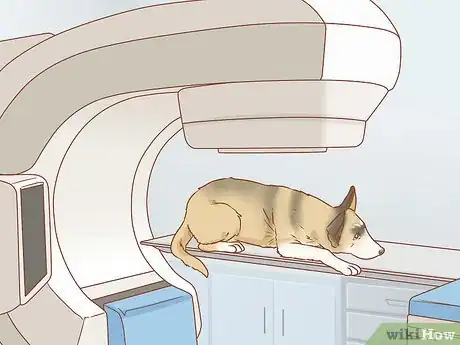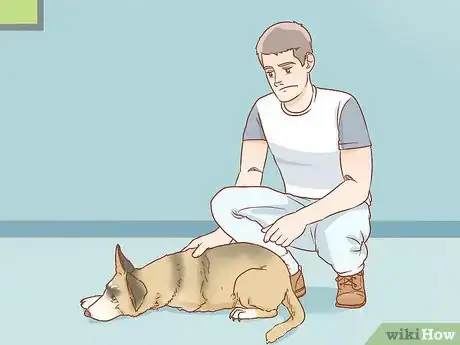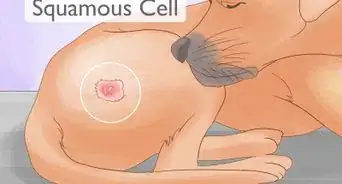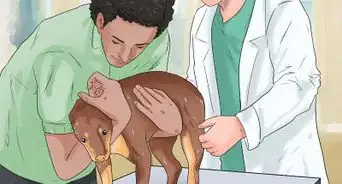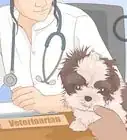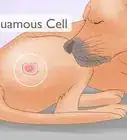This article was co-authored by Pippa Elliott, MRCVS and by wikiHow staff writer, Christopher M. Osborne, PhD. Dr. Elliott, BVMS, MRCVS is a veterinarian with over 30 years of experience in veterinary surgery and companion animal practice. She graduated from the University of Glasgow in 1987 with a degree in veterinary medicine and surgery. She has worked at the same animal clinic in her hometown for over 20 years.
This article has been viewed 30,172 times.
Discovering that your dog has a tumor can be scary, but most canine tumors aren’t cancerous or life-threatening. Lipomas, one of the most common tumors, can often simply be left alone, or you can try to shrink them with various vet-assisted or home-remedy methods. There are also potential ways to shrink other types of tumors, although you should always involve your vet in the treatment of any cancerous or otherwise dangerous tumor.
Steps
Getting Veterinary Treatment for Lipomas
-
1Confirm that the tumor is a lipoma. Most lipomas are soft, fatty tumors just beneath the skin that you can move around a little by pressing on them. They often show up on a dog’s neck, chest, or legs. Lipomas can be caused by a wide range of factors, but are almost never a health risk.[1]
- Run your hands along your dog’s skin every so often to feel for lipomas. Never diagnose a lipoma yourself, though—take your dog to the vet.
- Vets can often diagnose lipomas through a physical examination alone, but they may take a biopsy in some instances.
-
2Allow your vet to do a needle aspiration. In most cases, lipomas are nothing more than an annoyance or cosmetic issue. If your vet agrees that the lipoma can/should be removed, they’ll likely aspirate it—in other words, stick a needle into it and draw out the gunk to determine what sort of tumor it is and how to move forward.[2]
- Needle aspiration is a quick, straightforward procedure that your vet can do in their office.
Advertisement -
3Request surgery if aspiration fails on a bothersome lipoma. If the lipoma affects your dog’s normal movements or activities, your vet will probably suggest surgery. There will be a recovery period—which will vary based on factors like the location and size of the lipoma and your dog’s age and overall health.[3]
Treating Cancers and Other Tumors
-
1Leave papillomas alone if possible. Papillomas are a form of tumor better know as warts. They are viral in nature and typically form in and around a dog’s eyes and mouth. If left alone, they usually go away within 2 weeks to 2 months.[4]
- If they are causing irritation or are affecting your dog’s vision or ability to eat, however, they can be surgically removed with relative ease by your vet.
-
2Rely on medical treatments like surgery and chemotherapy for cancer. Potentially cancerous tumors should always be diagnosed and treated medically by veterinary specialists. Common cancerous tumors and treatments include:[5]
- Mast cell tumors. These are smaller, itchy skin tumors that are usually removed surgically. A biopsy will be conducted to see if chemotherapy or other treatment is needed.
- Osteosarcoma. This bone cancer, usually in the legs, is typically treated through amputation and chemotherapy.
- Hemangiosarcoma. This blood vessel cancer is usually found in the spleen. The spleen is usually removed surgically, followed by chemotherapy.
- Melanoma. This skin cancer produces brown or black spots on the dog’s skin. Surgery and radiation therapy are usually recommended; chemotherapy is usually ineffective.
- Lymphoma. You’ll find swollen lymph nodes with this cancer, usually under the jaw, in front of the shoulders, or behind the knees. Chemotherapy is the primary treatment.
-
3Be wary of non-medical treatments for cancerous tumors. Most veterinarians espouse medical methods like surgery, chemotherapy, and radiation therapy to address cancerous tumors. However, there are vets who favor more holistic, natural treatments for dealing with cancerous tumors in dogs—if this is your preference, search online for such vets in your area.[6]
- You should be very skeptical of canine cancer treatments you find online. For instance, while you can find claims that a mix of baking soda and maple syrup (or the “Kelmun protocol”) is an effective treatment, there is only weak anecdotal evidence (and absolutely no scientific support) to back it up.[7]
References
- ↑ https://www.petmd.com/dog/conditions/8-types-dog-tumors-and-how-treat-them
- ↑ https://www.petmd.com/dog/conditions/8-types-dog-tumors-and-how-treat-them
- ↑ https://www.petmd.com/dog/conditions/8-types-dog-tumors-and-how-treat-them
- ↑ https://www.petmd.com/dog/conditions/8-types-dog-tumors-and-how-treat-them
- ↑ https://www.petmd.com/dog/conditions/8-types-dog-tumors-and-how-treat-them
- ↑ https://www.dogsnaturallymagazine.com/cancer-in-dogs/
- ↑ https://www.cancertutor.com/faq_petcancer/
